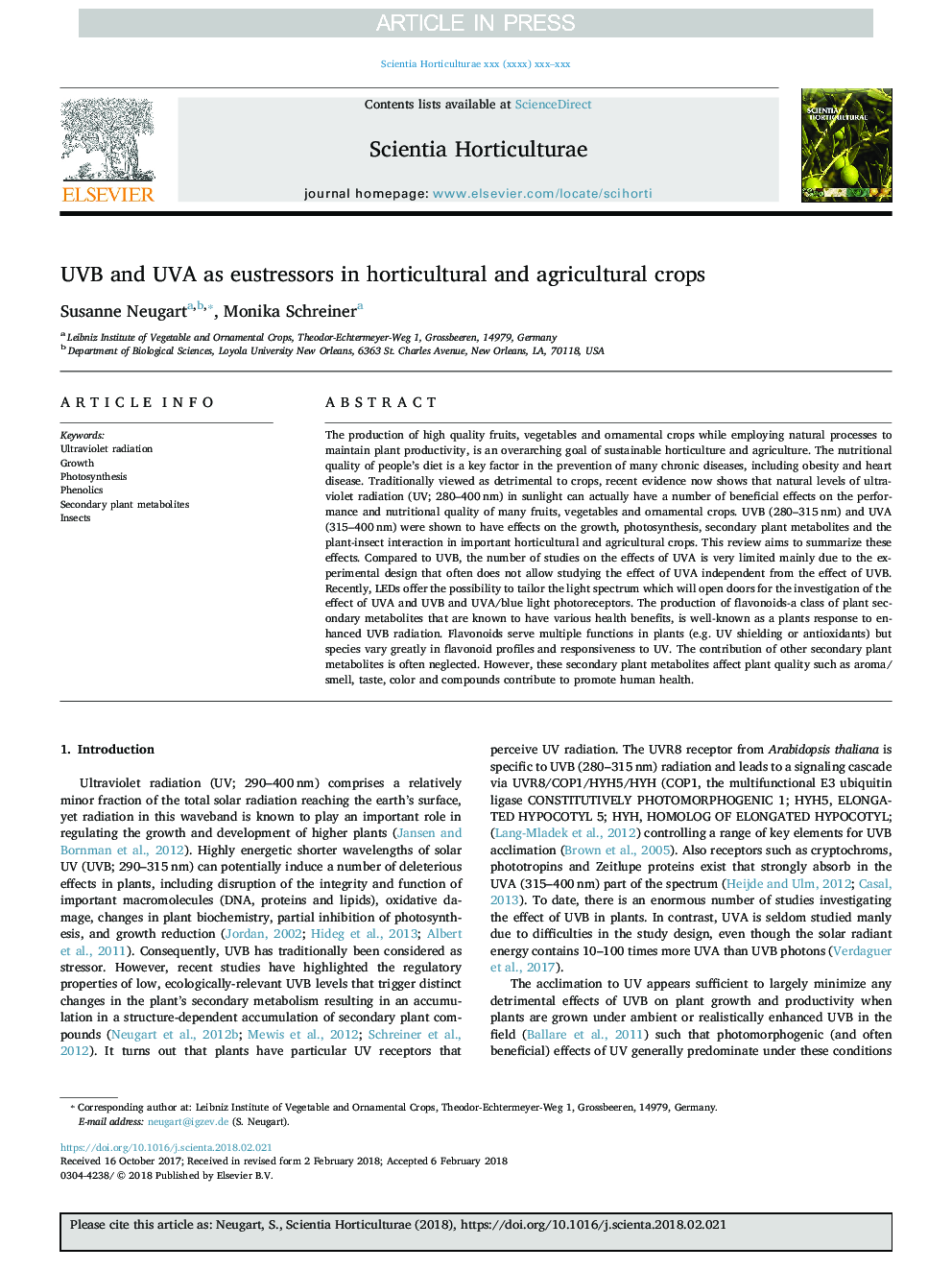| کد مقاله | کد نشریه | سال انتشار | مقاله انگلیسی | نسخه تمام متن |
|---|---|---|---|---|
| 8892795 | 1628764 | 2018 | 12 صفحه PDF | دانلود رایگان |
عنوان انگلیسی مقاله ISI
UVB and UVA as eustressors in horticultural and agricultural crops
دانلود مقاله + سفارش ترجمه
دانلود مقاله ISI انگلیسی
رایگان برای ایرانیان
کلمات کلیدی
موضوعات مرتبط
علوم زیستی و بیوفناوری
علوم کشاورزی و بیولوژیک
دانش باغداری
پیش نمایش صفحه اول مقاله

چکیده انگلیسی
The production of high quality fruits, vegetables and ornamental crops while employing natural processes to maintain plant productivity, is an overarching goal of sustainable horticulture and agriculture. The nutritional quality of people's diet is a key factor in the prevention of many chronic diseases, including obesity and heart disease. Traditionally viewed as detrimental to crops, recent evidence now shows that natural levels of ultraviolet radiation (UV; 280-400â¯nm) in sunlight can actually have a number of beneficial effects on the performance and nutritional quality of many fruits, vegetables and ornamental crops. UVB (280-315â¯nm) and UVA (315-400â¯nm) were shown to have effects on the growth, photosynthesis, secondary plant metabolites and the plant-insect interaction in important horticultural and agricultural crops. This review aims to summarize these effects. Compared to UVB, the number of studies on the effects of UVA is very limited mainly due to the experimental design that often does not allow studying the effect of UVA independent from the effect of UVB. Recently, LEDs offer the possibility to tailor the light spectrum which will open doors for the investigation of the effect of UVA and UVB and UVA/blue light photoreceptors. The production of flavonoids-a class of plant secondary metabolites that are known to have various health benefits, is well-known as a plants response to enhanced UVB radiation. Flavonoids serve multiple functions in plants (e.g. UV shielding or antioxidants) but species vary greatly in flavonoid profiles and responsiveness to UV. The contribution of other secondary plant metabolites is often neglected. However, these secondary plant metabolites affect plant quality such as aroma/smell, taste, color and compounds contribute to promote human health.
ناشر
Database: Elsevier - ScienceDirect (ساینس دایرکت)
Journal: Scientia Horticulturae - Volume 234, 14 April 2018, Pages 370-381
Journal: Scientia Horticulturae - Volume 234, 14 April 2018, Pages 370-381
نویسندگان
Susanne Neugart, Monika Schreiner,